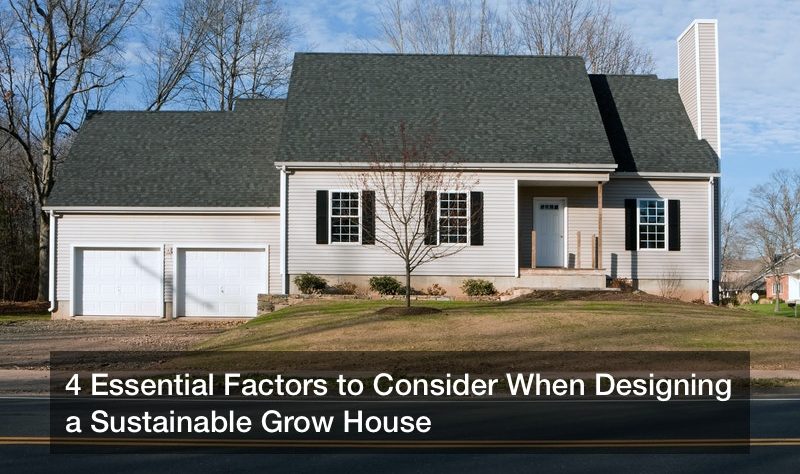
An indoor grow room is a designated space for germinating, growing and harvesting plants under controlled conditions. It is an excellent and efficient solution for sustainable indoor gardening. T When designing a grow room, there are key factors to keep in mind such as the location, space required, how to power and water crops, and choosing a grow light.
1. Choosing a Suitable Setup Space for Your Grow House
Finding an ideal place for your growroom is the first point of consideration for efficient operations. A greenhouse is the most preferred option, however, when dealing with limited garden space consider grow house trailer conversion.
- Turning an unused trailer into a grown room is one of the sustainable options for growing your plants, and it comes with many advantages. Most shipping trailers are not initially designed for growing, you have to customize it to meet the right growing standards.
- When ordering an already customized grow house trailer, make sure it is made of composite materials that resist mildew, insects and mold. The customized grow house trailer is quick and easy to set-up as well as take down, especially when relocating your grow room.
Whether using a converted shipping container, an indoor grow room or a greenhouse, consider how many plants you can fit in there and the varieties of plant to be grown. Some plant species will grow tall and thin, whereas others grow short and broad. Understanding these variations will enable you to determine the growing light and the ideal space between the plant. Most importantly, choose a space that will allow you to control and regulate ventilation, lighting and watering to maximize yields.
2.Using Living Organic Soil
Sustainable growing involves the use of living soil and organic nutrients. Living soil composes of a mixture of quality microorganisms and microfauna that provide your plants with essential nutrients and minerals. In addition to the sustainability of organic soils and nutrients, plants grown with living soil are tastier and full of flavor profiles.
3.Plant Watering in a Grow Room
When it comes to indoor gardening, there are various watering options available to consider. The first one is hydroponic, which is highly considered the most efficient and sustainable indoor growing method. Hydroponic “soils” is a common method used for indoor growing and is essentially a water-based, nutrient-rich solution often blended with sphagnum, peat and moss.
- Hydroponically grown plants utilize less herbicides and pesticides.
- In this method, plants grow twice much faster than conventional gardening methods.
- Plants grown hydroponically in urban areas are usually closer to the market, hence low transportation cost and reduced carbon footprint.
Other watering options include drip irrigation, hand watering and flood tables. Consider drip irrigation and flood tables as they allow automation, resulting in real-time data collection, proper water utilization, and more consistent yields.
Water recycling is a sustainable indoor gardening technique. The recyclable water comes from two main sources, runoff and vapor. However, before reusing water it must be sterilized to remove waterborne pathogens. Common methods used to treat runoff water and vapor include copper water treatment, UV water filtration and electrochemically activated water.
4. Choosing a Grow Room Air Conditioners
Greenhouse or a grow house trailer require right growing conditions such as optimum temperature, humidity and airflow.
However, maintaining these optimum conditions call energy intensive processes. That’s why you should invest in quality heating, ventilation, and air conditioning system.
Mini-split air conditioners are ideal for smaller grows because of their energy efficiency and their ability to heat and cool individual rooms. For larger grow operations, avoid using traditional HVAC systems and instead go for chilled water systems, which are good for dehumidification and cooling.
4. Sustainable Lighting Options
Lighting is a critical component for indoor grow operations and there are a number of lighting options to consider. Fluorescent lighting is best used for seedlings and young plants, whereas in the flowering stage of development fluorescent lighting inhibits growth.
Experts recommend the use of LED lighting at all stages. It’s the most energy-efficient lighting to use in large grow rooms. Avoid light burning by creating enough space between the light and the plant for more productivity of your grow.
